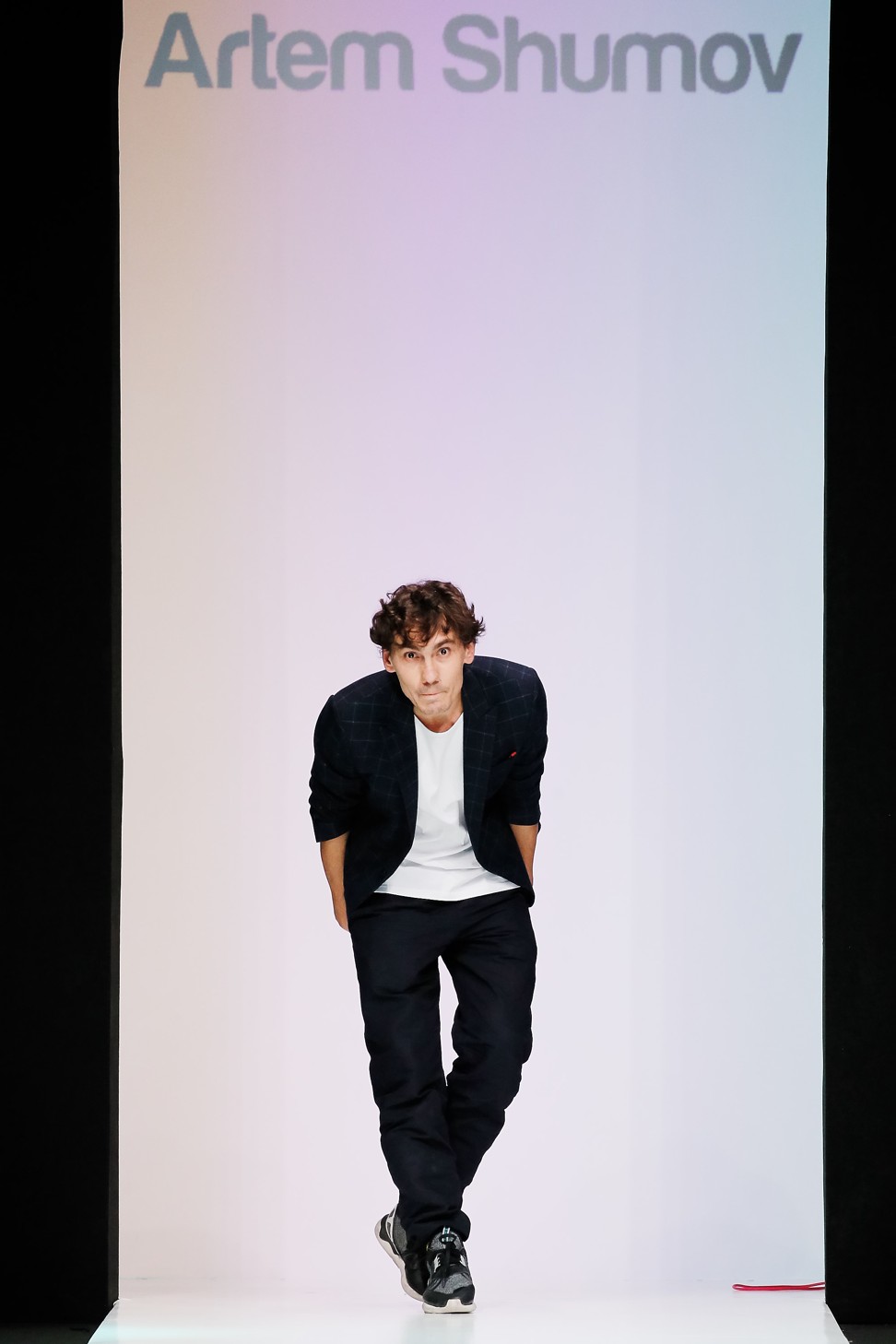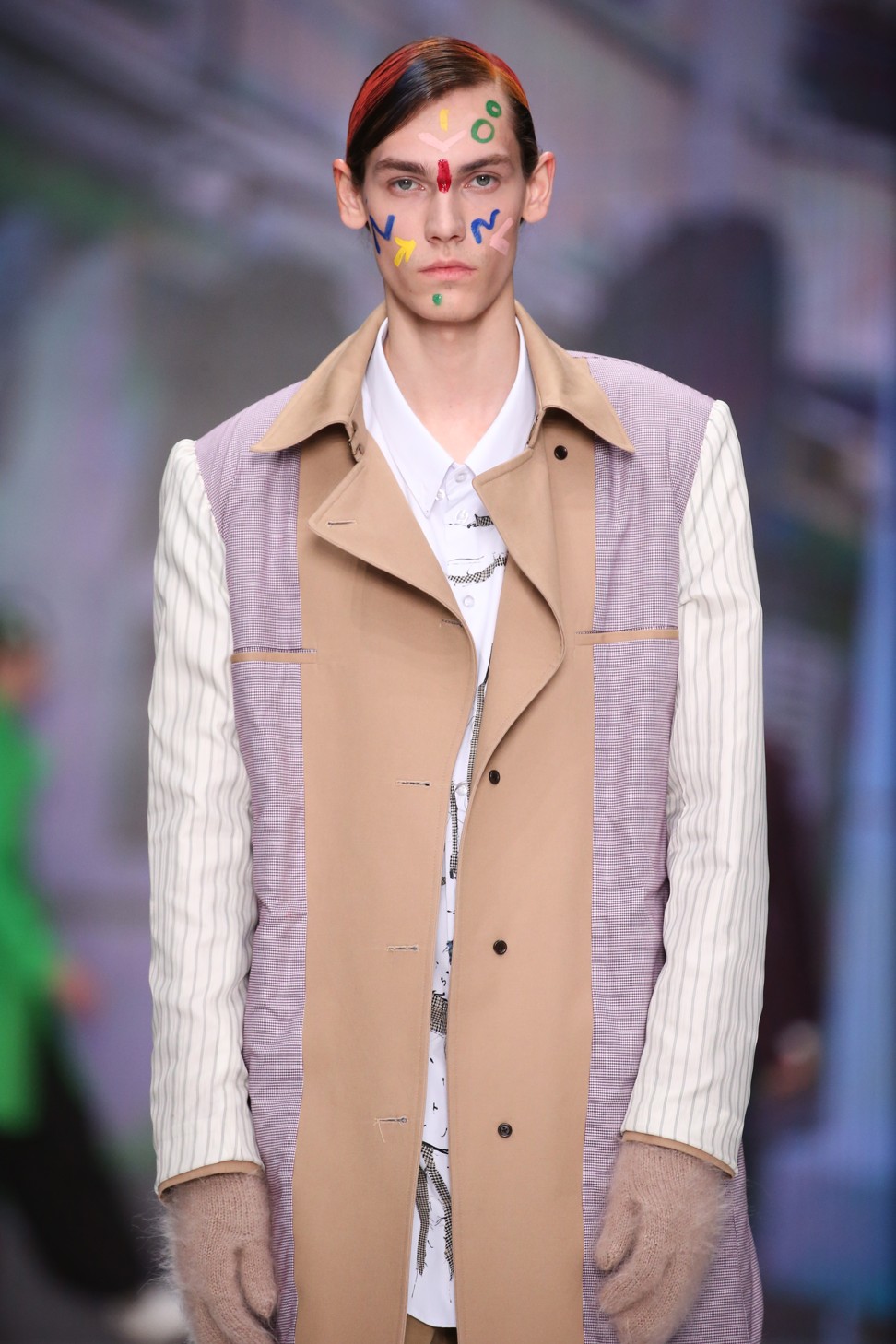
Russian fashion designer Artem Shumov on how China is inspiring his new collections
Shanghai-based Russian designer Artem Shumov made a splash at Moscow fashion week with a collection full of subtle Chinese influences born of his four years spent in the country
At last month’s Mercedes-Benz Fashion Week Russia in Moscow, one of the most talked about shows was that of menswear brand Artem Shumov.
Buyers and editors alike raved about the designer’s creativity and the quality of both the design and construction of the clothes. But what many didn’t realise was that the collection of sporty suits with playful details was largely inspired by China, which is where Shumov currently makes his home.
How Chinese shoppers helped turnaround of Moscow store Tsum
The 30-year-old designer moved to Shanghai four years ago after being coaxed over by a group of friends from his university days in St. Petersburg who had already settled in the city. After about a year he began teaching at the Shanghai campus of the Istituto Marangoni fashion and design school – despite turning down the job several times due to believing such a position was beyond him – which he continues to do today.

Slowly, the culture of the city and its inhabitants began to permeate not only his life, but his work as well.
“What I did before with all my collections was to base them on Russian culture, different periods of Russian history,” he says. “And this time, also because it’s more honest, but my friend challenged me to make a collection based on my lifestyle right now, and that’s why I decided it’s time to make it China-inspired.”

But at Shumov’s Moscow show, the Asian influences were neither overt nor cliché (aside from a subtle, embroidered dragon on the back of a jacket and a colourful silk scarf). Instead, they were more evident in the styling, the asymmetrical and oversized shapes – and in the mix of casual tailored silhouettes, athletic influences with classic styles, and whimsical details on otherwise traditional pieces.
“Chinese people are really playful with garments and how to match different items,” Shumov says.

The designer explains that his move to China has affected the production of his collection as well as its design, with about half of all his pieces now made in the country.
“In the beginning when I first came to China I didn’t know the language, so it was complicated to explain to people who don’t speak English what I want. But now after two years we know each other really well and that’s why we can communicate closer and I can do more complicated clothes,” he says. “And I still have some production in Russia, because it is easier to have fabrics ordered from Europe delivered there. So it depends on the item and the techniques used.”
The main thing for me as a teacher is to not push my ideas of design onto the students’ designs
While Shumov has just begun selling in some China stores, his line is mostly sold in Russia. He says that at the Gum luxury department store in Moscow’s Red Square, many of the customers who purchase his styles are Japanese or Korean. His pieces certainly have a subtle Asian sensibility to them and he explains that as his style has evolved, so have his customers.
“Our clients are a little bit older now than before, and it was a surprise for me because for the last few seasons – maybe they trust us more – but they are open to buying more modern styles, and not like super grey,” he says, adding that fashion culture in his home country is evolving. “That’s what I like about Russia. The people are really open, especially for the last one or two years in Moscow and also in St. Petersburg.”

While Shumov considers himself to be a designer first and foremost – he says there is no other career he would want to do – he also finds great enjoyment in his work as a fashion educator.
“I love it so much,” he says. “I like to be with the students. We have a lot of Chinese students and also some from different countries, and it’s interesting because it’s always something new. And to see how the students grow up and develop their designs after two years, it’s great.”

Shumov currently teaches classes on pattern making, textiles and production processes. He says that, due to the cultural differences, he learns from his students just as they learn from him.
“The main thing for me as a teacher is to not push my ideas of design onto the students’ designs,” he says. “We should just help them develop their own ideas, their own designs. We help them to maybe give some direction and to explain how they can get to where they want in the end. This is actually the most complicated part of education.”

Despite his success so far, the 30-year-old from the industrial city of Ufa remains humble and knows that he still has much to learn. Because of this, he is interested in possibly working with other brands in addition to his own.
World’s leading fashion schools open in Asia to meet rising demand for design education
“I see I still have a gap that I need to cover,” he says, noting that perhaps that could be accomplished by working with other, more experienced designers. “[But] of course I think the best education is personal experience. Try to sit by yourself, try to make the product by yourself. That’s the best education.”

